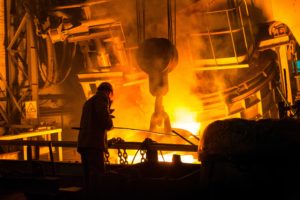Simple Industrial Technologies Commodity Division was established in 2020 due to increased demand for supplies as a result of the global pandemic shortage. Collaboration with strong suppliers from Asia, Russia and South America expanded company’s commodity portfolio to most sought-after products. From metallurgical to agricultural commodities, Simple Industrial Technologies can handle it all.
Commodities
Agricultural
![]()
Agricultural commodities are staple crops and animals produced or raised on farms or plantations. Most agricultural commodities such as grains, livestock, and dairy provide a source of food for people and animals across the globe.
However, some agricultural commodities have purely industrial applications. The building and furniture industries use lumber from trees, while manufacturers in several sectors use latex from the rubber tree. Wool from sheep provides the fabric for the clothing industry and lanolin for skin- and hair-care products. Some agricultural commodities serve as both a source of food and an industrial ingredient.
Metals

The metallic ores, which can vary in color from dark grey and bright yellow, to purples and reds, comprise around 5% of the Earth’s crust and are commonly found in four main types of deposit, the most frequently mined being hematite.
Ore producing companies supply a vital component of modern industry. From iron ore used as an ingredient in steel manufacturing to copper ore used to conduct electricity mostly in wiring.
Minerals

Minerals are naturally occurring inorganic solids with a crystalline structure and a definite range of chemical formula. A mineral is composed of the same substance throughout. There are about 3000 different minerals in the world. Minerals are made of chemicals – either a single chemical or a combination of chemicals. There are 103 known chemical elements. Minerals are sorted into 8 groups. The classes are: native elements, silicates, oxides, sulfides, sulfates, halides, carbonates, phosphates, and mineraloids.
Coal

Coal, one of the most important primary fossil fuels, a solid carbon-rich material that is usually brown or black and most often occurs in stratified sedimentary deposits.
Coal is defined as having more than 50 percent by weight (or 70 percent by volume) carbonaceous matter produced by the compaction and hardening of altered plant remains—namely, peat deposits. Different varieties of coal arise because of differences in the kinds of plant material (coal type), degree of coalification (coal rank), and range of impurities (coal grade). Although most coals occur in stratified sedimentary deposits, the deposits may later be subjected to elevated temperatures and pressures caused by igneous intrusions or deformation during orogenesis (i.e., processes of mountain building), resulting in the development of anthracite and even graphite. Although the concentration of carbon in Earth’s crust does not exceed 0.1 percent by weight, it is indispensable to life and constitutes humankind’s main source of energy.

